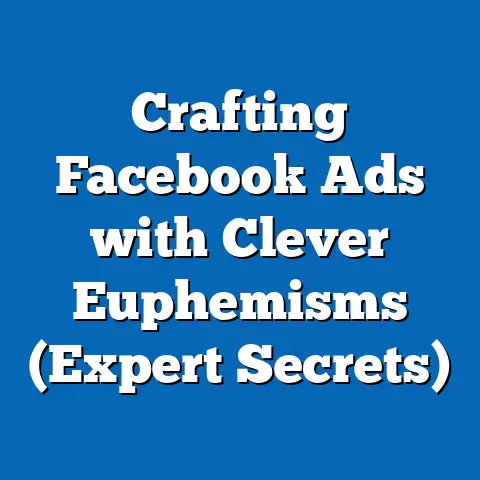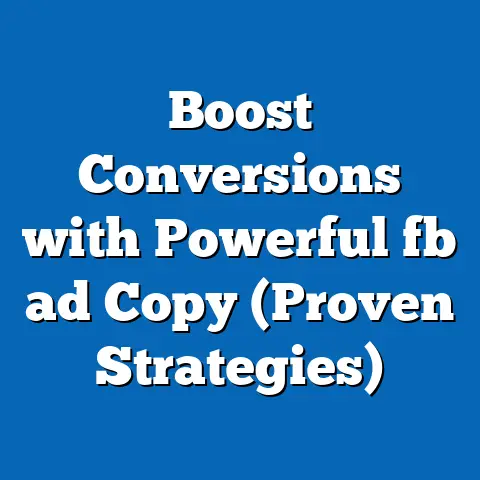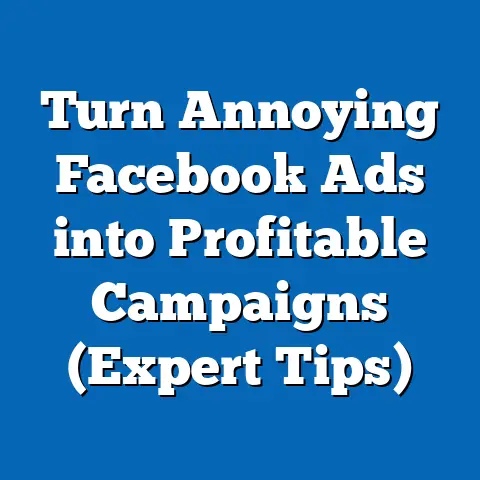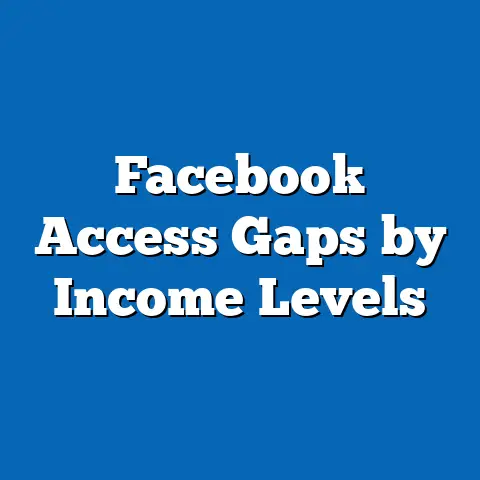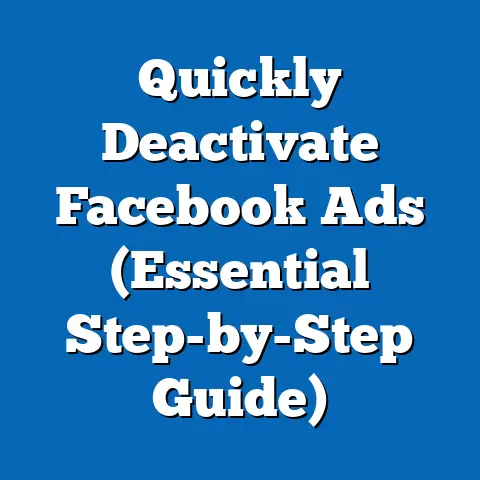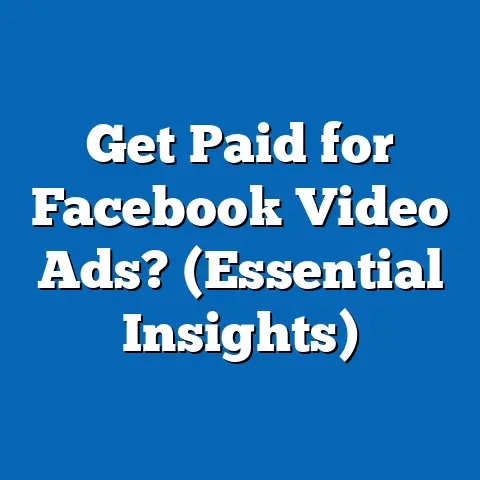Boost Call Engagement with Facebook Ads (Proven Strategies)
I remember when I first started helping small businesses with their marketing, I met a local bakery owner named Sarah. She was passionate about her pastries, but her biggest challenge was getting people through the door. She’d tried everything – local newspaper ads, flyers, even a sandwich board outside – but nothing seemed to consistently bring in new customers. She was frustrated, feeling like her delicious creations were hidden treasures nobody knew about. The worst part? Her phone barely rang. She felt isolated, spending more time alone in her kitchen than connecting with the community she so desperately wanted to serve.
Then, we started experimenting with Facebook ads. The initial results were underwhelming, to say the least. We were throwing spaghetti at the wall, hoping something would stick. It wasn’t until we honed in on a specific strategy – one focused on driving phone calls – that things truly started to change. Suddenly, her phone was ringing off the hook. People were calling to place orders, ask about catering, and even just to compliment her famous croissants! The relief and joy on Sarah’s face were palpable. She went from feeling invisible to being a beloved part of the neighborhood, all thanks to the power of connecting with potential customers through effective call-driven Facebook advertising.
This article isn’t just about advertising; it’s about creating connections. It’s about transforming your business from a hidden gem into a thriving hub of activity. I’m going to share the proven strategies that I’ve used to help businesses like Sarah’s skyrocket their call engagement with Facebook ads. Get ready to turn those frustratingly silent phones into a symphony of opportunity!
Section 1: Understanding Call Engagement and Its Importance
Call engagement, in the realm of digital marketing and specifically within the context of Facebook ads, refers to the number of phone calls a business receives as a direct result of its advertising efforts on the platform. It’s more than just someone picking up the phone; it’s about initiating a meaningful conversation with a potential customer who is actively interested in your product or service. This distinguishes it from other forms of engagement, like website clicks or page likes, which might not always translate into immediate sales or customer relationships.
Why is call engagement so important? Because in many industries, a phone call represents a crucial step in the customer journey. Think about it:
- High-Value Products/Services: For businesses selling complex or high-value products/services (e.g., insurance, real estate, home renovations), a phone call allows for personalized consultation, addressing specific concerns, and building trust – something that’s hard to replicate through online interactions alone.
- Time-Sensitive Needs: When customers have urgent needs (e.g., plumbing emergencies, towing services, urgent medical care), they often prefer immediate assistance via phone.
- Local Businesses: For local businesses (e.g., restaurants, salons, auto repair shops), a phone call can be the quickest way to make a reservation, confirm hours, or get directions.
- Lead Generation: Call engagement provides a direct line to potential leads. Unlike website form submissions that can get lost in the shuffle, a phone call allows for immediate qualification and personalized follow-up.
Beyond simply generating leads, effective call engagement has a direct impact on business growth. Studies have consistently shown a strong correlation between businesses that actively manage and optimize their call engagement and increased revenue. According to a report by Invoca, businesses that prioritize call tracking and analysis see an average of 10-15% increase in sales conversion rates.
Here’s why these metrics are so essential for measuring the success of Facebook advertising campaigns:
- Direct Revenue Attribution: Call tracking allows you to directly attribute revenue to your Facebook ad spend. By tracking which ads are driving the most calls and which calls are converting into sales, you can make data-driven decisions about where to allocate your budget.
- Improved Campaign Optimization: Understanding your call engagement metrics allows you to identify areas for improvement in your ad campaigns. For example, if you’re getting a lot of calls but a low conversion rate, it might indicate that your sales team needs better training or that your pricing is not competitive.
- Enhanced Customer Understanding: Listening to call recordings and analyzing call transcripts provides valuable insights into customer needs, pain points, and preferences. This information can be used to refine your targeting, messaging, and overall marketing strategy.
Key Takeaway: Call engagement is a powerful metric that goes beyond vanity metrics like likes and shares. It represents a direct line to potential customers, allowing for personalized interaction, immediate assistance, and ultimately, increased revenue. By understanding the importance of call engagement and tracking its impact on your business, you can optimize your Facebook advertising campaigns for maximum ROI.
Section 2: The Facebook Advertising Landscape
Facebook, with its massive user base and sophisticated targeting capabilities, has become an indispensable platform for businesses of all sizes. As of Q4 2023, Facebook boasts over 3 billion monthly active users, representing a vast pool of potential customers. But it’s not just the sheer size of the audience that makes Facebook so attractive; it’s the platform’s ability to connect businesses with the right people, at the right time, with the right message.
The evolution of Facebook ads has been remarkable. What started as simple banner ads has transformed into a complex ecosystem of ad formats, targeting options, and measurement tools. In the early days, targeting was limited to basic demographics like age, gender, and location. Today, Facebook allows you to target users based on their interests, behaviors, life events, and even their purchase history. You can create custom audiences based on your existing customer data or build lookalike audiences that mirror the characteristics of your best customers.
This level of precision targeting is what makes Facebook ads so effective for driving phone engagement. You can specifically target users who are most likely to be interested in your product or service and who are actively searching for solutions that you offer. For example, if you’re a plumber, you can target homeowners in your local area who have recently searched for terms like “leaky faucet” or “water heater repair.”
Here are some of the Facebook ad types that can be utilized to promote call engagement:
- Ads with a “Call Now” Button: This is the most straightforward way to drive phone calls. You simply create an ad with a compelling image or video and include a prominent “Call Now” button that users can click to immediately connect with your business. This format is particularly effective for businesses offering time-sensitive services or products.
- Lead Ads: Lead Ads allow you to collect customer information directly within the Facebook platform, without sending users to an external landing page. You can include a phone number field in your lead form and encourage users to provide their contact information so that you can follow up with a phone call. This format is ideal for businesses that need to qualify leads before making a sales pitch.
- Click-to-Call Ads: These ads are designed to drive traffic to your website, but they also include a prominent phone number that users can click to call you directly. This format is a good option if you want to provide more information about your product or service before encouraging users to call.
- Video Ads: Video ads are a highly engaging format that can be used to showcase your product or service, tell your brand story, and build trust with potential customers. You can include a call-to-action in your video that encourages viewers to call you for more information or to schedule a consultation.
Each of these ad formats has its unique advantages. Ads with a “Call Now” button are the most direct way to drive phone calls, while Lead Ads allow you to collect valuable customer information. Click-to-Call ads provide more context before the call, and Video Ads offer a highly engaging way to connect with potential customers.
Key Takeaway: Facebook advertising offers a powerful platform for driving call engagement, thanks to its vast user base, sophisticated targeting capabilities, and diverse range of ad formats. By understanding the Facebook advertising landscape and choosing the right ad formats for your business, you can connect with the right people, at the right time, and encourage them to pick up the phone and call you.
Section 3: Proven Strategies to Boost Call Engagement
Now, let’s dive into the heart of the matter: the proven strategies that I’ve personally used to help businesses like yours boost call engagement with Facebook ads. These aren’t just theoretical concepts; they’re practical, actionable techniques that you can implement today.
3.1. Tailored Audience Targeting
Targeting is the foundation of any successful Facebook ad campaign. It’s not enough to simply put your ad in front of a large audience; you need to ensure that you’re reaching the right people – those who are most likely to be interested in your product or service and who are actively searching for solutions that you offer.
Facebook offers a wide range of targeting options, including:
- Demographics: Age, gender, location, education, relationship status, job title, etc.
- Interests: Hobbies, passions, activities, pages they like, etc.
- Behaviors: Purchase history, online activity, device usage, travel habits, etc.
- Custom Audiences: Customers who have interacted with your business in the past (e.g., website visitors, email subscribers, app users).
- Lookalike Audiences: Users who share similar characteristics with your existing customers.
The key to effective targeting is to understand your ideal customer. This is where creating buyer personas comes in. A buyer persona is a semi-fictional representation of your ideal customer, based on research and data about your existing customers. It includes details such as their demographics, interests, behaviors, pain points, and goals.
For example, let’s say you’re a dentist specializing in cosmetic dentistry. Your ideal customer might be a woman aged 35-55, living in an affluent suburb, with an interest in fashion, beauty, and health. She’s active on social media, follows influencers in the beauty space, and is concerned about her appearance. She’s likely to be employed in a professional role and has disposable income to spend on cosmetic treatments.
Once you have a clear understanding of your ideal customer, you can use Facebook’s targeting tools to reach them effectively. You can target users based on their demographics, interests, and behaviors that align with your buyer persona. You can also create custom audiences based on your existing customer data or build lookalike audiences that mirror the characteristics of your best customers.
Pro Tip: Don’t be afraid to experiment with different targeting options. Facebook’s algorithm is constantly learning and adapting, so what works today might not work tomorrow. Continuously test different targeting combinations to find the sweet spot that delivers the best results.
3.2. Crafting Compelling Ad Copy
Your ad copy is the voice of your business. It’s what captures the attention of potential customers and persuades them to take action. In the context of call engagement, your ad copy should be designed to prompt users to pick up the phone and call you.
Here are some tips for writing persuasive ad copy that drives phone calls:
- Highlight the Benefits: Focus on the benefits of your product or service, not just the features. What problem do you solve? How do you make people’s lives easier?
- Use Strong Verbs: Use action-oriented verbs that encourage users to take action. Examples include “Call Now,” “Get a Free Quote,” “Schedule a Consultation,” “Speak to an Expert.”
- Create a Sense of Urgency: Use language that creates a sense of urgency and encourages users to call you immediately. Examples include “Limited Time Offer,” “Call Today,” “Don’t Miss Out,” “Act Now.”
- Include Social Proof: Use testimonials, reviews, or case studies to build trust and credibility. Show potential customers that others have had positive experiences with your business.
- Keep it Concise: People have short attention spans, so keep your ad copy concise and to the point. Get straight to the benefits and make it easy for users to understand what you’re offering.
- Use Emojis: Emojis can add personality and visual appeal to your ad copy. Use them sparingly and strategically to highlight key points and grab attention.
The call-to-action (CTA) is the most important part of your ad copy. It’s the final nudge that prompts users to take action. Make sure your CTA is clear, concise, and compelling. Use strong verbs and create a sense of urgency.
Example: “Is your AC on the fritz? Don’t sweat it! Call ABC Air Conditioning today for fast, reliable repairs. We offer 24/7 emergency service and upfront pricing. Call now for a free quote!”
3.3. Eye-Catching Visuals and Formats
Visuals are the first thing people see when they encounter your ad on Facebook. They play a crucial role in capturing attention and conveying your message. In the context of call engagement, your visuals should be designed to reinforce your ad copy and encourage users to pick up the phone.
Here are some tips for creating eye-catching visuals that drive phone calls:
- Use High-Quality Images: Use professional-quality images that are well-lit, in focus, and visually appealing. Avoid using stock photos that look generic or staged.
- Showcase Your Product or Service: Use images that showcase your product or service in action. Show potential customers how your product or service can solve their problems or improve their lives.
- Use Video: Video is a highly engaging format that can be used to tell your brand story, showcase your product or service, and build trust with potential customers. Keep your videos short and to the point.
- Use Bright Colors: Use bright, vibrant colors that grab attention and make your ad stand out from the crowd.
- Use Text Overlays: Use text overlays to highlight key points and reinforce your message. Keep the text concise and easy to read.
- Use Faces: Images of people’s faces can be highly effective at capturing attention and building trust. Use images of happy customers or employees to connect with potential customers on an emotional level.
Facebook offers a variety of ad formats, including:
- Single Image Ads: These are the simplest type of ad, consisting of a single image and accompanying text.
- Video Ads: These ads feature a video and accompanying text.
- Carousel Ads: These ads allow you to showcase multiple images or videos in a scrollable carousel format.
- Collection Ads: These ads are designed for e-commerce businesses and allow you to showcase a collection of products in a visually appealing format.
- Instant Experience Ads: These ads are full-screen experiences that load instantly when users click on your ad.
Choose the ad format that best suits your message and target audience. Experiment with different formats to see what works best for your business.
Example: A plumbing company could use a video ad showing a plumber quickly and efficiently fixing a leaky pipe, followed by a call-to-action to “Call Now for Emergency Service.”
3.4. Leveraging Facebook Pixel
The Facebook Pixel is a small snippet of code that you place on your website to track user interactions. It allows you to measure the effectiveness of your Facebook ad campaigns and optimize them for better results.
Here’s how you can use the Facebook Pixel to boost call engagement:
- Track Website Visitors: The Pixel allows you to track which users are visiting your website from your Facebook ads. This information can be used to create custom audiences of website visitors and retarget them with ads that encourage them to call you.
- Track Conversions: The Pixel allows you to track conversions on your website, such as form submissions, purchases, and phone calls. This information can be used to measure the ROI of your Facebook ad campaigns and optimize them for better results.
- Create Lookalike Audiences: The Pixel allows you to create lookalike audiences of users who share similar characteristics with your website visitors or customers. This can help you reach new potential customers who are likely to be interested in your product or service.
Retargeting is a powerful strategy for re-engaging users who have shown interest in your business but haven’t yet taken action. You can use the Facebook Pixel to create custom audiences of website visitors who haven’t called you and retarget them with ads that encourage them to pick up the phone.
Example: You could retarget website visitors who viewed your pricing page but didn’t fill out a contact form with an ad that offers a free consultation.
3.5. Implementing A/B Testing
A/B testing is the process of comparing two versions of an ad to see which one performs better. It’s a crucial strategy for optimizing your Facebook ad campaigns and maximizing your ROI.
You can A/B test different aspects of your Facebook ads, including:
- Ad Copy: Test different headlines, body text, and CTAs.
- Visuals: Test different images, videos, and ad formats.
- Targeting: Test different targeting options, such as demographics, interests, and behaviors.
- Placement: Test different ad placements, such as Facebook Feed, Instagram Feed, and Audience Network.
The key to effective A/B testing is to test one variable at a time. This allows you to isolate the impact of each variable and determine which one is driving the best results.
Example: You could A/B test two different headlines in your ad copy to see which one generates more phone calls. One headline might focus on the benefits of your product or service, while the other might focus on creating a sense of urgency.
3.6. Utilizing Customer Testimonials and Social Proof
People are more likely to trust businesses that have positive reviews and testimonials. Showcasing testimonials or user-generated content can build trust and encourage potential customers to call you.
Here are some ways to incorporate social proof into your Facebook ad campaigns:
- Include Testimonials in Your Ad Copy: Use quotes from satisfied customers in your ad copy to highlight the benefits of your product or service.
- Feature Reviews in Your Visuals: Use screenshots of positive reviews in your images or videos.
- Share User-Generated Content: Share photos or videos of customers using your product or service.
- Highlight Your Ratings and Awards: If you’ve received positive ratings or awards, be sure to highlight them in your ads.
Example: A restaurant could feature a testimonial from a customer raving about their delicious food and friendly service in their Facebook ad.
Key Takeaway: Boosting call engagement with Facebook ads requires a multi-faceted approach that combines tailored audience targeting, compelling ad copy, eye-catching visuals, strategic use of the Facebook Pixel, rigorous A/B testing, and powerful social proof. By implementing these proven strategies, you can transform your Facebook ad campaigns into a lead-generating machine that drives a steady stream of phone calls to your business.
Section 4: Measuring Success and Optimizing Campaigns
Measuring the success of your Facebook ad campaigns is crucial for understanding what’s working and what’s not. It allows you to make data-driven decisions about where to allocate your budget and how to optimize your campaigns for better results.
Here are some key performance indicators (KPIs) relevant to call engagement:
- Call Volume: The total number of phone calls you receive as a result of your Facebook ad campaigns.
- Call Conversion Rate: The percentage of calls that convert into sales or leads.
- Cost Per Call: The average cost you pay for each phone call you receive.
- Return on Ad Spend (ROAS): The revenue you generate for every dollar you spend on Facebook ads.
You can track these KPIs using Facebook Ads Manager. Facebook Ads Manager provides a wealth of data about your ad campaigns, including impressions, clicks, reach, and conversions. You can also integrate Facebook Ads Manager with call tracking software to track phone calls that originate from your Facebook ads.
Analyzing this data allows you to understand what strategies are working and where improvements can be made. For example, if you’re getting a lot of calls but a low conversion rate, it might indicate that your sales team needs better training or that your pricing is not competitive. If you’re getting a low call volume, it might indicate that your targeting is too narrow or that your ad copy is not compelling enough.
Ongoing optimization is essential for maximizing the ROI of your Facebook ad campaigns. Facebook’s algorithm is constantly learning and adapting, so what works today might not work tomorrow. You need to continuously monitor your campaign performance and make adjustments as needed.
Here are some tips for optimizing your Facebook ad campaigns:
- Refine Your Targeting: Continuously test different targeting options to find the sweet spot that delivers the best results.
- Improve Your Ad Copy: Experiment with different headlines, body text, and CTAs to see what resonates with your target audience.
- Update Your Visuals: Keep your visuals fresh and engaging. Test different images, videos, and ad formats.
- Adjust Your Bids: Monitor your cost per call and adjust your bids accordingly.
- Pause Underperforming Ads: Don’t be afraid to pause ads that are not performing well. Focus your budget on the ads that are driving the best results.
Key Takeaway: Measuring success and optimizing campaigns is an ongoing process that requires continuous monitoring, analysis, and adaptation. By tracking your KPIs, analyzing your data, and making adjustments as needed, you can maximize the ROI of your Facebook ad campaigns and drive a steady stream of phone calls to your business.
Conclusion
Remember Sarah, the bakery owner I mentioned at the beginning? Her story is a powerful reminder of the transformative potential of effective Facebook advertising. It’s not just about generating leads or driving sales; it’s about creating connections, building relationships, and transforming your business from a hidden gem into a thriving hub of activity.
The strategies I’ve shared in this article are not just theoretical concepts; they’re practical, actionable techniques that I’ve personally used to help businesses like yours skyrocket their call engagement with Facebook ads. By implementing these strategies, you can turn those frustratingly silent phones into a symphony of opportunity.
Imagine the feeling of relief and joy as you answer call after call from potential customers who are genuinely interested in your product or service. Imagine the satisfaction of knowing that your marketing efforts are directly contributing to the growth and success of your business.
The power of connection is real. It’s what drives businesses forward and creates lasting relationships with customers. By leveraging the power of Facebook advertising and focusing on driving call engagement, you can unlock that power and transform your business into something truly special.
So, take action today. Implement the strategies I’ve discussed in this article. Track your results. Optimize your campaigns. And watch as your phone starts ringing off the hook. The power of connection is waiting for you. Go out there and claim it!

